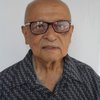About a couple of months ago at a time when Dr. Govinda KC was on his fast to death, a friend of mine queried about the status of medical education in Nepal. He was dismayed by, not only the various pro and cons for the starting of more medical colleges in Nepal but also by the general attitude of doctors to patients in the scenario of the 21st Century. His feeling was that in the good old days, the older generation of doctors generally cared for their patients and took their day to day work, more as a vocation. The patients were known to their doctors as individuals and were treated as such. His feeling was that this doctor / patient relationship has broken down over the years. Why is this so? Has the greater demand and the larger numbers of service providers led to poorer service?
Pre 1950 the health care services in the country was being done by traditional practitioners who included ayurvedic facilities. The practitioners were dhamis, jhankris, baidyas and doctors. In the following years there was a great leap forward as far as the establishment of Western system of medicine in Nepal was concerned.
It was a known fact that the General Medical Council (GMC) of the United Kingdom was the first body to have been set up to register medical practitioners and publish regularly a list of medical practitioners to inform the public of the same. Rules were framed for ethical practice. The GMC was therefore set up to protect the public from unscrupulous doctors. The primary function of the Nepal Medical Council (NMC) is also the same.
Taking this fact into consideration, HMG/N decided in 1964 to set up the NMC. This body was modelled on the GMC of the UK and the Medical Council of India (MCI) with guidelines and rules similar to those of the two institutions to regulate the practice of medicine in Nepal.
Though maintaining the standard of medical education in the country is another task of the NMC, it has focussed more on the setting up and running of the medical colleges in Nepal. Whilst all this is necessary, the NMC has paid scant attention on the practice of medicine that is carried out in this country.
Though the NMC Act has been revised a number of times the fact remains that the composition of the body leaves a lot to be desired. Whilst some criteria for eligibility have been specified there are many areas where this is not so. There should more representation of the Universities that are conducting both under and post graduate medical courses. Doctors practising in different regions of the country in difficult circumstances should have representation. Finally the presence of judicial experts and consumers is essential for protection of the public.
There is a feeling that the worldwide shortage of doctors has attracted many entrepreneurs to invest in the training of not only doctors but also other grades of health workers to meet the demand all over the world. Institutions were established and credited overnight. Such institutions having lack of money, men and materials, cut corners and produced manpower which has not been trained properly. This shortage of personnel for health work is universal and what has always prevailed as a reality is that a fairly large proportion of the workforce needed has been supplied by institutions in third world countries. Whilst it is true that the requirements of the least developed and developing countries is large, the extensive production of health workers, including doctors has led to a dropping of standards. Selection of candidates is poor and many of those who have trained have done so only with the objectives of earning money.
The production of ill-trained manpower has become a cause for concern not only in Nepal but in other parts of the world too. A recent blog in the UK stated that not only doctors trained abroad but even those trained in the home country had been found unfit to practise. Was this because of private parties running such institutions were not concerned about the suitability of candidates to work as doctors? Is the standard of education going down there also? Was it as result of this that the GMC decided in 2010 to derecognised medical graduates of nine universities of Nigeria?
All this leads us to worry about the standards of medical education in Nepal. After passing the 10 +2 a large number of Nepali students opt to go for the medical or engineering profession. Whilst some go out of the country by choice, many who do not get seats here do so. Even those not eligible to study medicine here go outside of the country to do so. To practise medicine independently, the NMC has instituted licensing examinations but there are many candidates who have been unable to pass it for innumerable number of times? Ke garne?
One is in doubt about the credibility of the NMC at present. The shadow of the Commission for the Investigation of Abuse of Authority (CIAA) is looming over some of its members. NMC therefore is in a state of flux. What to do? The sad fact is that there have recently been three chairmen of this august body in quick succession as a result of medico political manoeuvrings. When will this authority stabilise, if ever? Does it need intravenous (IV) supplementation to be able to function properly so as to oversee and direct the functioning of the medical services in this country?

Hemang Dixit
The author writes fiction under the name of Mani Dixit. Website: www.hdixit.org.np. Twitter: @manidixithd
- Top Heavy
- Sep 20, 2023
- Most Able?
- Sep 04, 2023
- Changing Times
- Aug 21, 2023
- Nepali Shenanigans
- Aug 03, 2023
- Budget Naataks
- Jun 29, 2023















